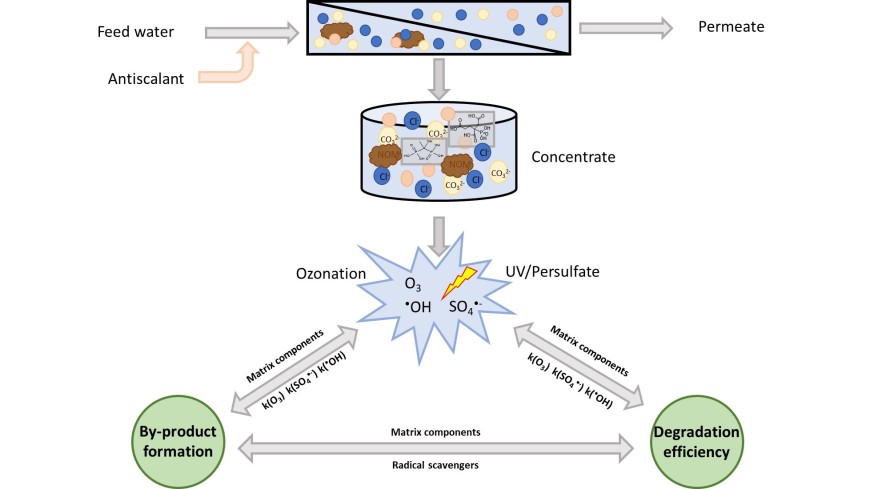New Publication in Chemosphere
Oxidation of the N-containing phosphonate antiscalants NTMP and DTPMP in reverse osmosis concentrates: Reaction kinetics and degradation rate
2023/10/02
Xenia A. M. Mutke, Felix Drees, Holger V. Lutze, Torsten C. Schmidt

N-containing organophosphonate antiscalants such as Aminotris (methylene phosphonic acid) (NTMP/ATMP) and Diethylenetriamine penta(methylene phosphonic acid) (DTPMP) are commonly used in reverse osmosis (RO) to prevent scaling, as well as to increase permeate yields. However, the concentrate in RO still contains antiscalants which can cause adverse effects in the environment such as mobilization of heavy metals. The abatement of antiscalants from RO concentrate can promote the precipitation of oversaturated scale-forming substances and reduce the risk of adverse environmental effects. In the present study, the degradation of NTMP and DTPMP as representatives for N-containing organophosphonate by ozone, hydroxyl radicals (•OH), and sulfate radicals (SO4•-) are studied regarding reaction kinetics and degradation in different matrices. The results show that NTMP and DTPMP react fast with ozone and sulfate radicals (formed in UV/persulfate). Reaction rate constants of ozone showed a strong pH dependency due to the dissociation of the amine. The apparent reaction rates for pH 7 have been determined to be kapp(NTMP + ozone) = 1.44 × 105 M−1 s−1 and kapp(DTPMP + ozone) = 1.16 × 106 M−1 s−1. Reaction kinetics of •OH and SO4•- did not play a distinctive pH dependency (k(•OH) = 109-1010 M−1 s−1 and k(SO4•-) = 107-108 M−1 s−1). Furthermore, real water experiments have shown that ozonation and UV/persulfate are effective tools to abate organophosphonates in RO concentrates. The formation of carcinogenic bromate in ozonation is minimized by the presence of N-containing organophosphonates presumably due to enhanced ozone consumption and scavenging of free bromine.
